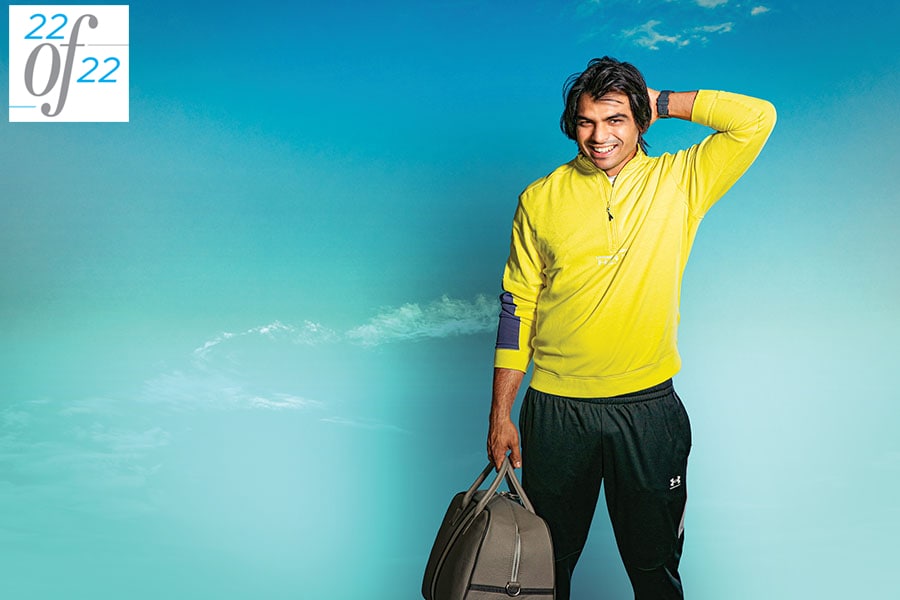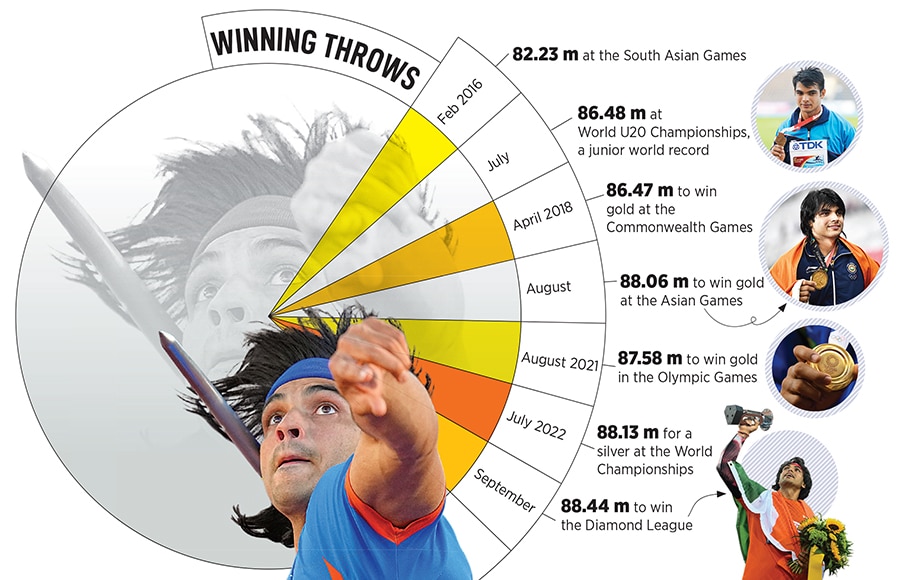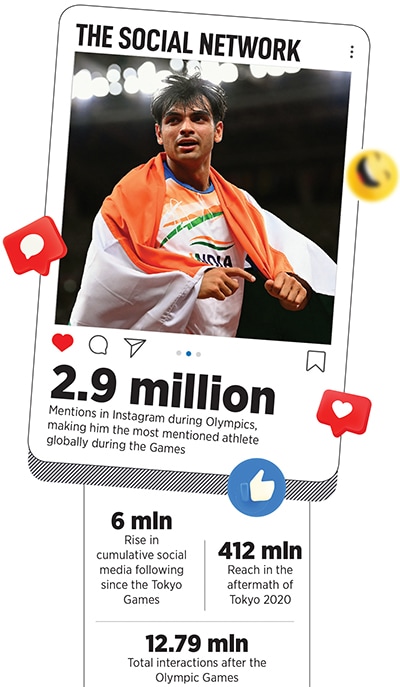
Forbes India Person of the Year 2022: Neeraj Chopra is just getting started
After his gold-winning exploits at the Tokyo Olympics, Neeraj Chopra had an equally phenomenal run in 2022, winning the elite Diamond League and a medal at the World Championships But, more importantly, he has given Indian athletes a seat at the table
 If 2021 turned Neeraj Chopra into a national hero with his throw of 87.58 m at the Tokyo Games, this year, he’s only picked up from where he left off.
Image: Madhu Kapparath; Styling: Yatan Ahluwalia; Hair: Atul Sharma; Makeup: Sakshi Verma; Athleisure wear by Under Armour; Sports leather bag by Three Sixty; Casual watch by GUESS
If 2021 turned Neeraj Chopra into a national hero with his throw of 87.58 m at the Tokyo Games, this year, he’s only picked up from where he left off.
Image: Madhu Kapparath; Styling: Yatan Ahluwalia; Hair: Atul Sharma; Makeup: Sakshi Verma; Athleisure wear by Under Armour; Sports leather bag by Three Sixty; Casual watch by GUESS
We are shooting with Neeraj Chopra in Delhi, and the studio’s all set up. The backdrop has been unfurled, the lights adjusted, flashes tested, while Chopra, attired in a blue ensemble, is perched on a stool as hairdressers fix his floppy mop that was hanging out of the cap he was wearing backwards when he came in. The photographer and the stylist, meanwhile, are running a mini-conference last minute to decide whether a scarlet trunk, kept out of the frame so far, would add an edge to the aesthetics. Chopra listens for a bit, then chimes in: “De do bhai, ‘airport look’ ho jayega [Give it, brother, it will become an ‘airport look’].”
While the guffaws that follow prove he can land a joke as well as a javelin, it’s no surprise that, with his elevation to stardom, the reigning Olympic champion is all too familiar with paparazzi-speak for snapping celebrities outside airports. But it’s also equally fitting that the poster boy for Indian athletics uses a turn of phrase that embodies a journey, for few sporting careers in recent times have taken a flight as glorious as his: From a podgy kid in Haryana’s Khandra village to India’s first individual Olympic gold-medallist in athletics (and the second overall after shooter Abhinav Bindra). And that’s not it.
If 2021 turned Chopra into a national hero with his throw of 87.58 m at the Tokyo Games, this year, he’s only picked up from where he left off. In July, he won a silver at the World Athletics Championships, becoming only the second Indian after long jumper Anju Bobby George to medal at the prestigious Games; later in the year, he became the only Indian to win the marquee Diamond League, an annual series of elite track and field competitions.
At 25—a number that’s easy to forget given his colossal achievements—Chopra has given Indian athletics a voice and heft on the world stage.










 For Chopra, achievements mean zero if they can’t make him happy. “Covid showed us how our plans can get foiled anytime. But we must still find happiness. Bas khush reh ke apna kaam karte jao,” he says. “For me, it’s the javelin.”
For Chopra, achievements mean zero if they can’t make him happy. “Covid showed us how our plans can get foiled anytime. But we must still find happiness. Bas khush reh ke apna kaam karte jao,” he says. “For me, it’s the javelin.” 



